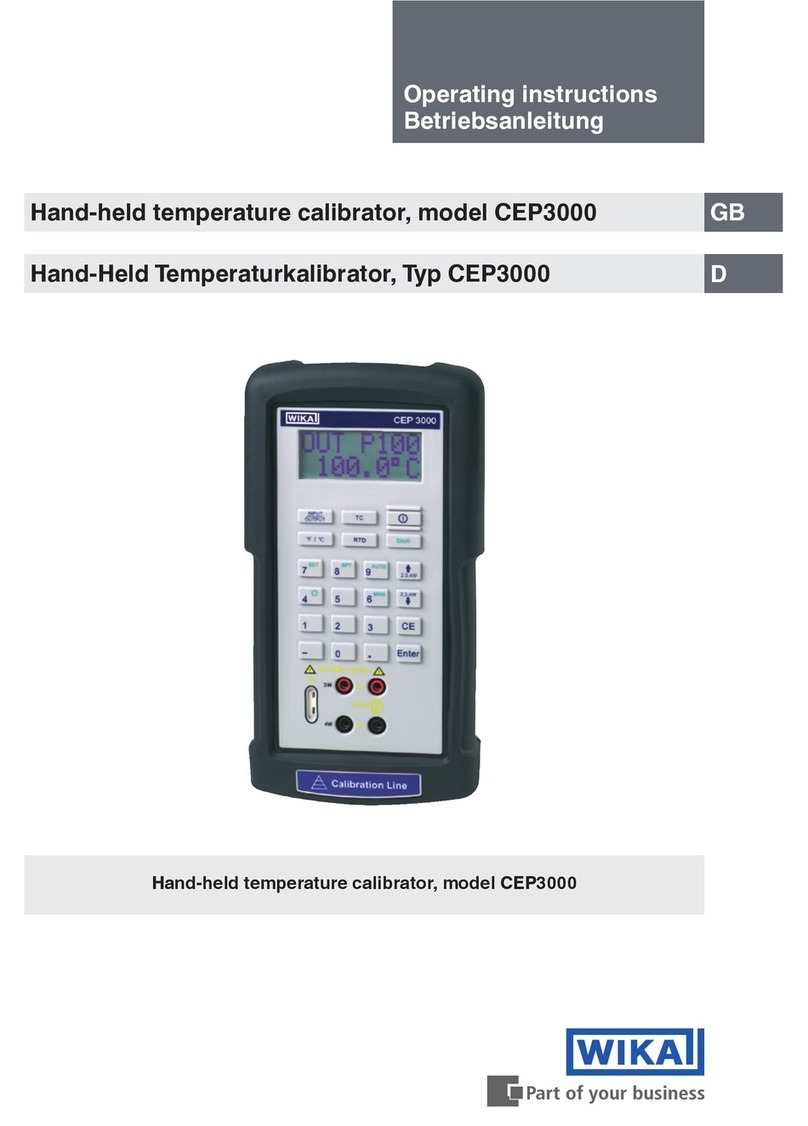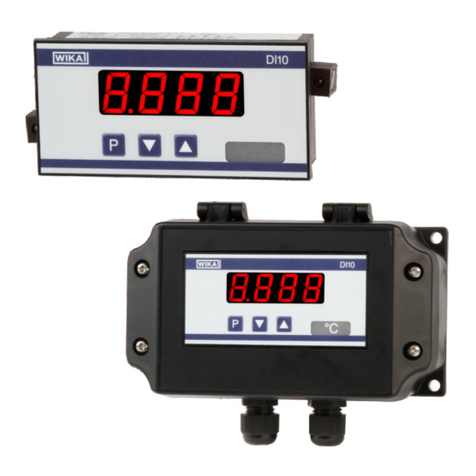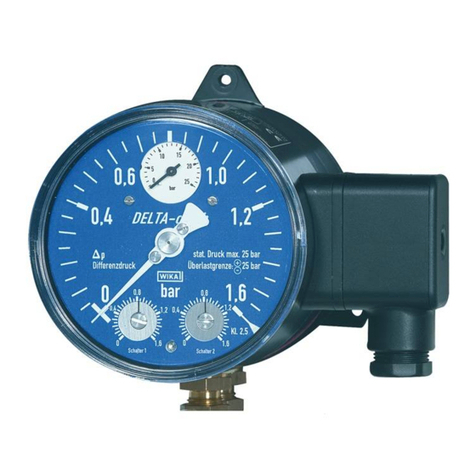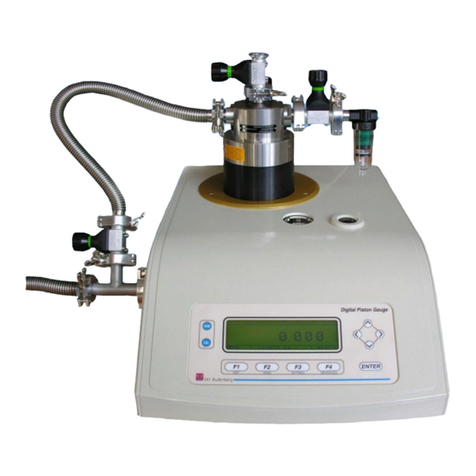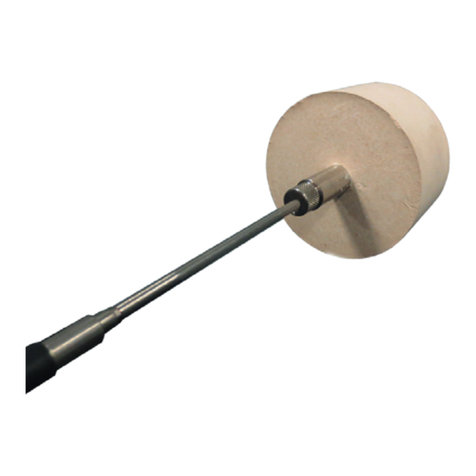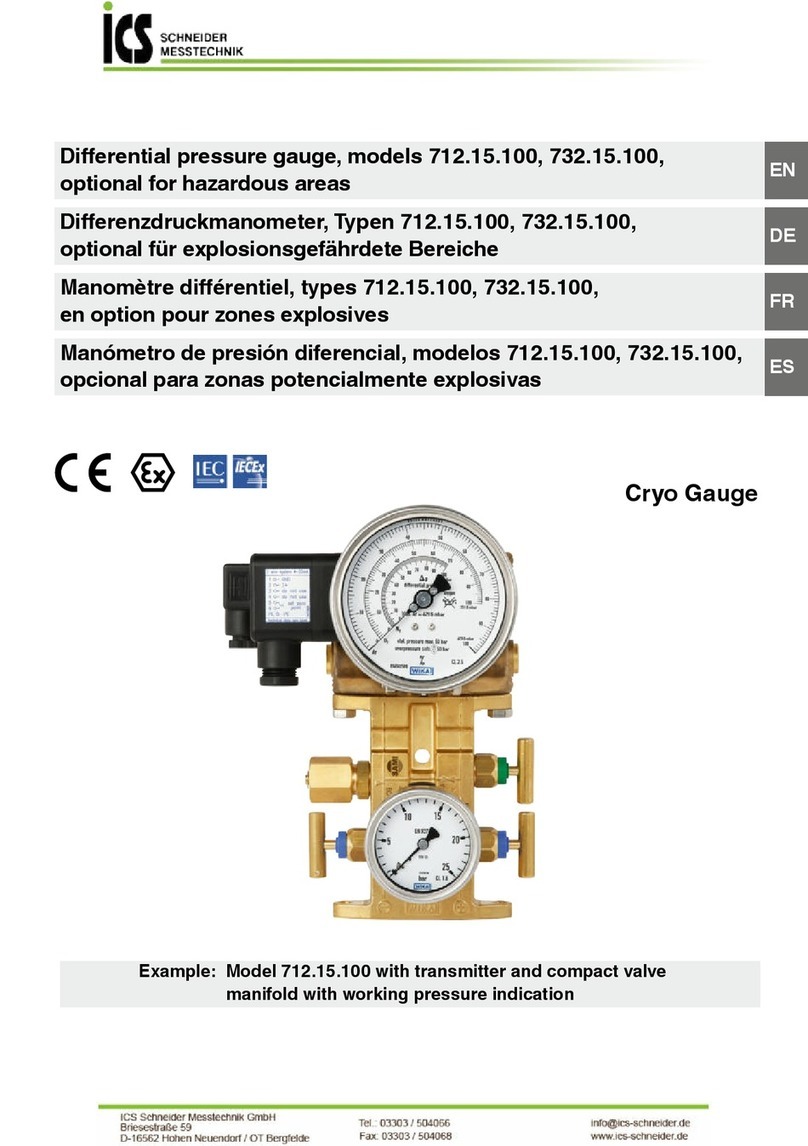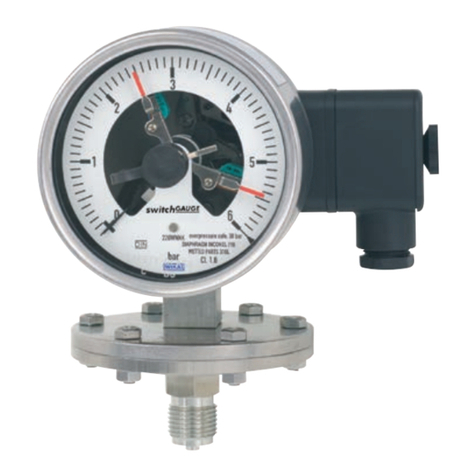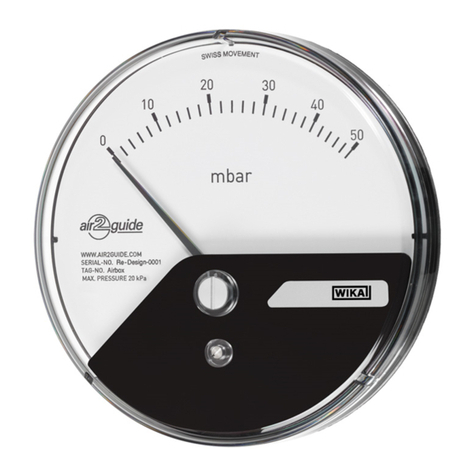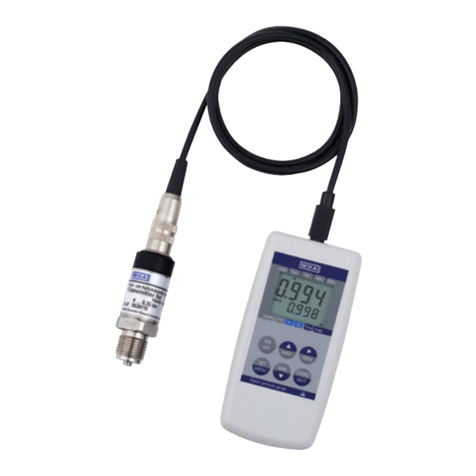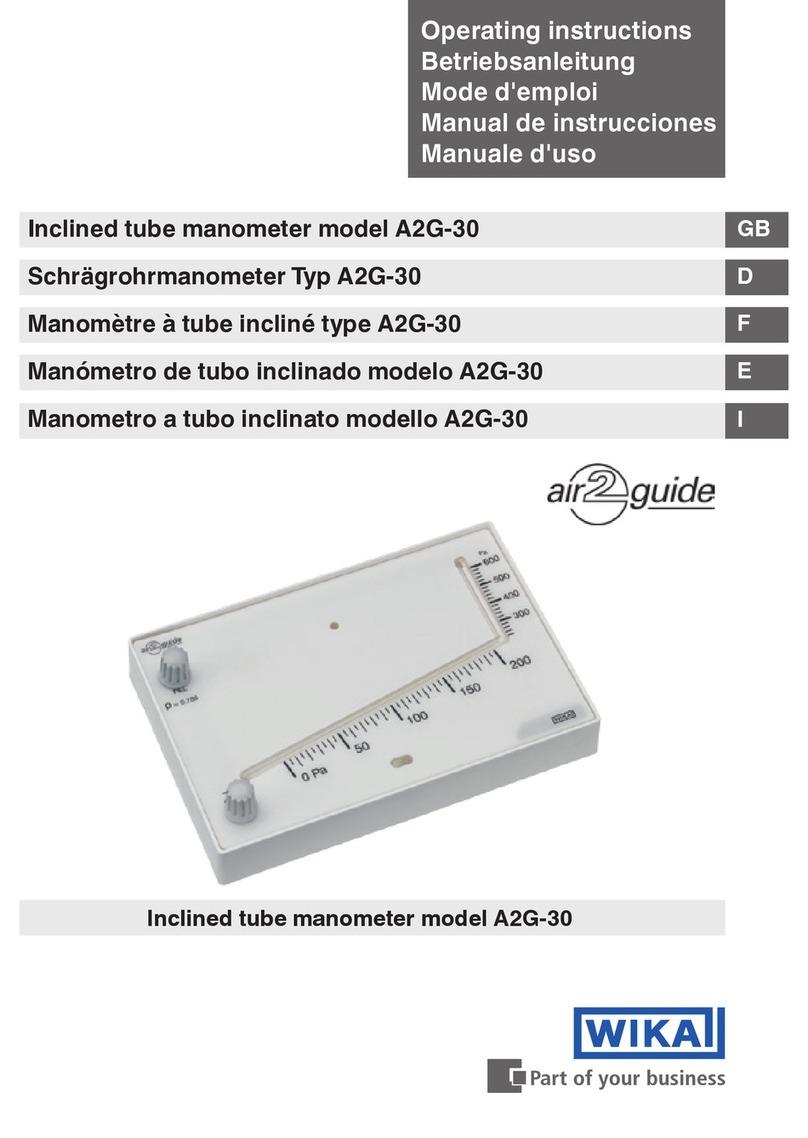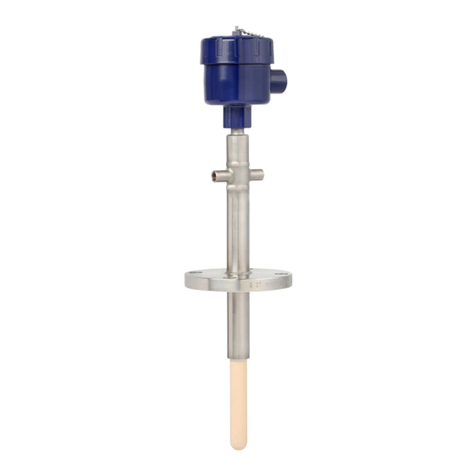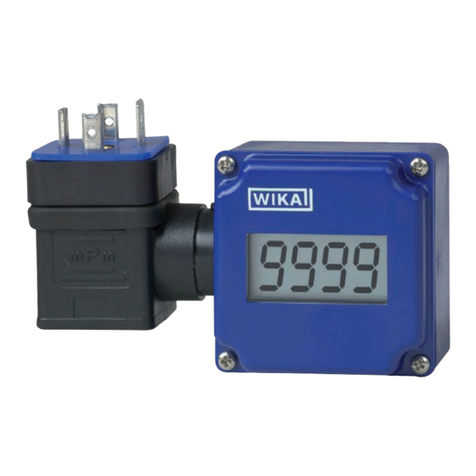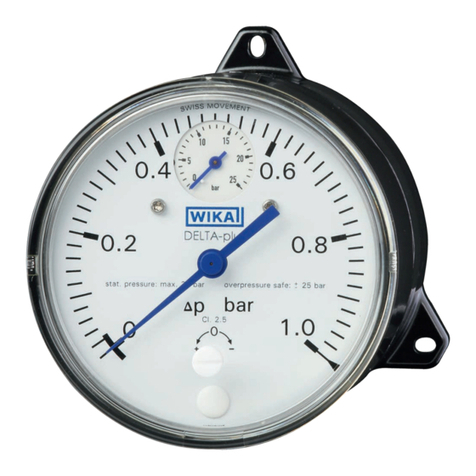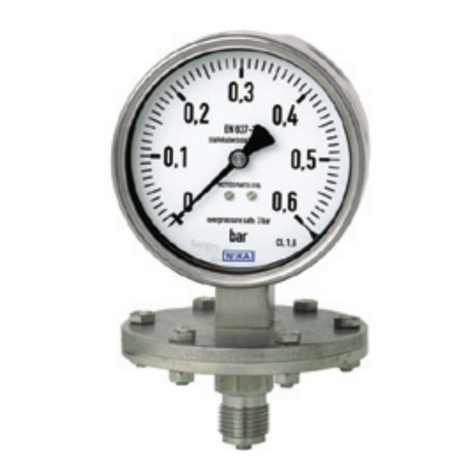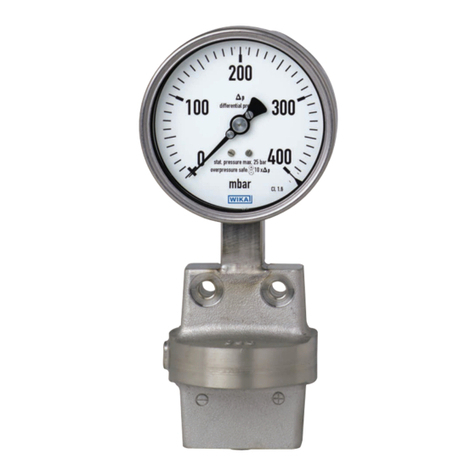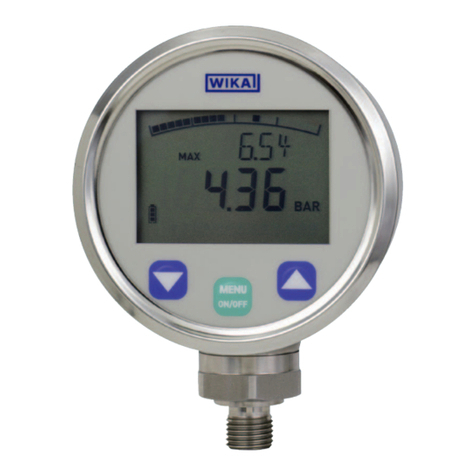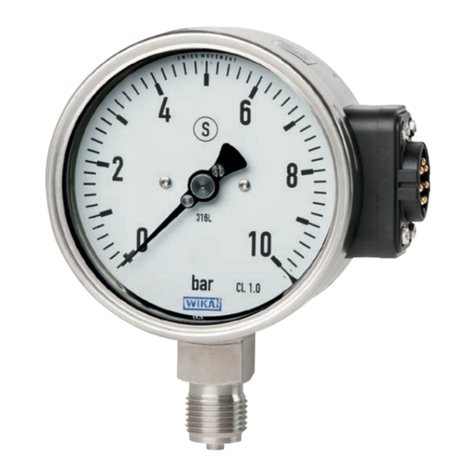
Book # 52090680 Page 4
NOTE: The check valves are not intended to be overpressure protection devices.
CAUTION: Do not operate gauges without check valve. Gauge may be damaged if operated without the protective check valve.
6-inch Diameter Dial Gauges
The maximum case working pressure is 15 psig.
Gauges with ranges less than one atmosphere (15 psia) will withstand pressure up to 4 psig without damaging the mechanism.
Gauges with one atmosphere range will withstand 150% of full scale or approximately 22 psia (7 psig) without mechanism distortion.
On gauges with range of 30 psia, do not exceed full scale (approximately 15 psig) since this is the maximum working pressure for the case.
2-3/4-inch Diameter Dial Gauge
The maximum case working pressure is 150 psig.
Gauges with ranges less than one atmosphere will withstand pressure up to 4 psig without damaging the mechanism.
All ranges of one atmosphere and above will withstand 150% of full scale pressure without damaging the mechanism.
Exercising: Before the instrument is used for precise measurements, exercise it by alternately increasing and decreasing the applied pressure over the
entire range of the instrument at least three times. Hold maximum and minimum pressures for two minute periods.
Reading: Unless otherwise noted, the instrument is calibrated to be read with the dial in the vertical position. When the instrument has a mirror on the
dial, the pointer and its image should coincide so that only the pointer may be seen. On two revolution instruments, an indicator shows the portion of
the scale to be read.
All WIKA High Precision instruments are calibrated on increasing pressure. To avoid any effect of hysteresis, take readings on increasing pressure.
Instruments are calibrated at 23⁰C. Unless wide temperature changes are experienced, the effect of temperature may be neglected. For further
discussion, see CALIBRATION CHECK.
CALIBRATION CHECK
A complete check of calibration of an instrument requires that it be exercised as above and compared with a standard having a verified accuracy several
times greater and a scale comparable in length to the instrument being checked. The standard must be corrected for all its inherent errors and must be
corrected to standard conditions of gravity (980.665 cm/sec²) and temperature (O⁰C for mercury columns or 20⁰C for water columns, where applicable).
While aneroid instruments are not subject to changes in reading due to gravity they are affected by temperature. WIKA High Precision instruments read
directly in terms of standard conditions (see preceding paragraph) at a temperature of 23°C unless other-wise indicated. If the calibration check is
conducted at 23°C, the effect of temperature, on the WIKA instrument need not be considered. At any other temperature, the temperature effect listed
in the table PERFORMANCE CAPABILITY must be considered. This is not a correction factor but rather, a tolerance that must be added to other
tolerances being checked. When readings are taken on increasing pressures, they should fall within the specified reading accuracy tolerance given in the
table. The difference between the up-scale reading and the down-scale reading is the hysteresis error and should fall within the specified limits.
Setting the pointer If a calibration check shows the readings on increasing pressures at various points over the entire range are out by the same angular
distance, the pointer may be reset. Adjustment is limited to a pointer movement of about 10 degrees.
Access locations to the pointer adjustment screw are described in the following text.
If the error is not linear and cannot be corrected with a simple pointer adjustment, the gauge should be returned to the factory for repair and/or
recalibration.
WIKA maintains a fully equipped service center staffed with trained personnel to repair and recalibrate WIKA instruments.
Series 1000 and 1500 have two different adjustment locations: on ranges below 100 psig, access to the pointer adjustment is obtained by removing a
screw in the rear of the case. On ranges 100 psig and over the adjustment is done by removing a screw in the glass dial cover (see DWG 610.050.101.011
and 610.050.102.011).
Adjustment of Series 300 During operation of the instrument under a high vacuum source if the pointer reads above zero, check the system for
tightness. Necessity for adjustment may be determined by placing the instrument in a system as close to the vacuum source as possible and evacuating
for a period of one hour. A pointer adjustment, if required, may be made by using the bezel FU4252 for the 2-3/4-inch dial instrument or the bezel
FU2542 for the 6-inch dial instruments.
1. Disconnect the instrument from the vacuum source.
2. Remove the bezel and glass from the instrument.












